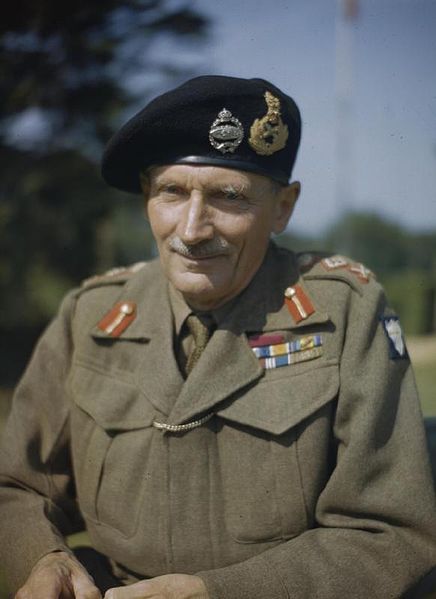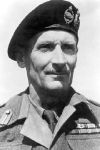How the Army's Amazing Bailey Bridge is Built
The War Illustrated, Volume 8, No. 198, Page 564, January 19, 1945.
A revolution in military engineering has earned high praise from Field-Marshal Montgomery – a permanent way which can be assembled on the spot to span a river or gap and carry the weight of the heaviest tanks. Speed ans simplicity are its keynotes. How a Bailey bridge can be erected in three hours by 40 men is explained below by T. S. DOUGLAS. See also p. 169.
A retreating enemy endeavours to burn his bridges behind him, and almost since the beginning of warfare the construction of emergency bridges has been a matter of prime consideration. In modern war a bridge has no longer simply to support the weight of marching infantrymen and of artillery. It has to carry the enormous lorries and massive tanks of a mechanized army.
It was the increasing weight of British tanks that early in this war led to the invention of the Bailey bridge, which has enabled us to pursue the German panzers during the last two years. The Germans have nothing like it.
First of all, it is easily transportable. No special transport vehicles are required. Every part fits into a three-ton lorry, and a small group of these vehicles can move everything required for a complete bridge. The exact number of vehicles varies with the length and strength of the bridge that is to be erected. The way that length and strength can be varied is another advantage. Without supports or pontoons, the Bailey can span a gap of up to 240 ft. Using the supports of a bridge that has been destroyed, or pontoons, the bridge can cover almost any distance. The longest Bailey bridge so far constructed is believed to be the 1,200 ft. bridge over the Sangro River in Italy, a triumph of military engineering. The longest floating Bailey bridge (1,096 ft.) was thrown over the Chindwin in Burma in December 1944. The bridge can be constructed with single panels and single tiers so as to take moderately heavy traffic immediately. Additional panels and tiers, greatly increasing the load it will carry, can be added while it is actually being used. There is nothing to undo – you simply add.
There are other advantages. Two footways for infantry are carried outside the roadway, so that there is no confusion between foot and wheeled traffic. If the bridge is damaged by shells or bombs, the damaged section is easily removed and a new one inserted. Most of the bridge is built on the near shore where there is a certain amount of cover, and it can be built between banks of different levels. It is not surprising that Field-Marshal Montgomery said not long ago, “There is never enough Bailey bridging. This bridge is quite the best thing in that line we have ever had; it does everything we want!”
The principle of the bridge is simple. Standard parts are fitted together, largely by means of strong pins each weighing six pounds which in turn are held by split pins. The vital part is the lattice-work panel which is carried ready assembled, and in fact strongly welded. Six men can carry this part by special handles. These panels, locked together, support the roadway which is of wood and is assembled as the bridge is built. Road guides not only keep the traffic central but also hold down the standard wood pieces which from the roadway. The wooden footways are supported outside the panels.
It is the method of “launching” that makes the Bailey bridge so novel. Each 10-ft. section is built up on shore, complete with roadway, then pushed forward on special rollers, which are part of the equipment, almost to the point of balance. The next section is then added and the bridge pushed forward again. A false “nose” is fixed, and when this has crossed the gap it given support while the final panels are completed; after which “nose” and rollers are removed so that the bridge can be locked in position.
Forty Men Can Construct a Bridge
There are only 17 parts used in making the bridge itself, and another nine in constructing the supports on which it rests. The tools required are of the simplest, but very ingenious. All these parts, with the necessary tools, are packed into standard lorries. The number of men used on construction varies, of course, with the size and speed required. But forty men can construct a complete bridge. In ideal conditions a short and single-tier bridge can be assembled in three to four hours, a little longer at night. But conditions are rarely ideal in war. One of the finest feats was the construction of a 300-ft. bridge over the Trigno in Italy within 36 hours of the bridge-head being cleared of enemy infantry. A remarkable feat was also performed on D-Day in Normandy, when engineers bridged the Caen Canal and the Orne River while under fire of every kind from the enemy. They had the advantage of having rehearsed the bridging again and again in Scotland.
One of the secrets of the bridge is precision in the manufacture of its parts, and the greatest credit is due to the firms and their employees who have turned out miles of Bailey bridging. When the bridge was approved, none of the factories normally undertaking this kind of work was available. All kinds of factories were enlisted to the task of production – some had been making greenhouses, window frames, bedsteads and even canoe paddles! The parts have to be exactly the right size, those vital holes that take the pins in exactly the right place, and all parts interchangeable. Just to make sure, every piece is tested by being built into a bridge before it leaves the factory. The test consists in constructing a continuous bridge, but in the factory as soon as it reaches “the other side” it is taken to pieces section by section.
Mr. Donald C. Bailey, O.B.E., the designer of this bridge, is a civil engineer in the Ministry of Supply. He was not a specialist in bridge construction when the call came for an improved military bridge, and is said to have sketched out the returning with other officials from an unsuccessful trial of a bridge in 1940. Every military invention has its “growing pains”, but those of the Bailey bridge seem to have disappeared very quickly, and for once everyone was satisfied from their own special angle. By the end of 1943 engineers were actually averaging two Bailey bridges a day, and all the time the vast store of them required for D-Day was being built up.
The Bailey bridge will cross any kind of gap, and although it goes up so quickly it is permanent. All the bridges, long and short, “easy” and difficult, have averaged 24 hours in construction. Some of the first are still in use, having carried hundreds of thousands of tons of traffic.
Index
Previous article
Troopships That Never Fail the Battle-Lines
Behind official totals of Allied troops successfully carried over the seas are many half-divulged stories of brilliant achievements of troopships by the hundred. All types and sizes of vessels are the
Next article
The Story of the Little Bronze Cross for Valour
The most famous decoration in the world - the highest of its kind - the Victoria Cross is but an ounce of bronze. But the award itself is without price. This story of its record up to the present day





